Frequently Asked Questions
Everything You Need to Know
How do I sign up?
What are the Fundraising Requirements?
There are no fundraising requirements of Living Skies Irish Dance families.
We work hard to provide an excellent program with affordable fees without fundraising obligations.
What is Appropriate Class Attire?
Dancers must come to class prepared to participate. This includes: shorts, t-shirt/tank top, hair in a ponytail, white socks, a water bottle, and appropriate footwear.
What is Irish dance footwear?
Dancers begin in ‘soft shoes’, also called ‘ghillies’, then progress into hard shoes (similar to a tap shoe).
New dancers are able to wear ballet slippers, jazz oxfords, or sneakers until they obtain soft shoes.
There are often an assortment of used shoes available throughout the year, and particularly in the fall. Check with your teacher about what used shoes are at the studio
Can Family Members Watch Class?
On a regular basis, parents and siblings are not permitted to watch class as it can be a distraction for dancers.
What are Extra-Curricular Expectations?
There are a variety of activities provided for our dancers’ developmental benefit. These include opportunities such as cross training workshops, yoga, and performances.
We expect our Intermediate and Advanced dancers to take advantage of all activities which benefit and support the community and their own personal skill development.
What Should New Dancers Expect from Class?
Our Wee Ones class is our preschool and kindergarten dancers. Our 30-minute class focuses on developing movement skills and spacial awareness. These dancers learn the building block skills to prepare them for learning dance steps in their second year of dance.
Banshee are six years and up beginner dancers. This class teaches the fundamentals of positioning, technique, and posture, as well as the basic steps moving on to their first solo and group dances.
*Typically beginner dancers have their performance debut at our year end recital.
What About Missed Classes ?
Cancelled Classes - If class is cancelled by the studio, for reasons such as weather, then a make-up class will be offered. Either the class will be offered at an alternate date & time, or dancers may be invited to attend another class during the week.
Missed Classes - If a dancer misses class due to a conflict on their end, no make-up class will be scheduled.
How Many Performances are in a Year?
We offer multiple performance opportunities throughout the year for our dancers. Irish dance Regina performances range from appearances at seniors’ residences and other cultural events throughout the city.
Our premiere performance opportunity is our annual recital which wraps up our dance year in mid June. This exclusive opportunity allows our dancers to demonstrate the exceptional skills and choreography they work on throughout the year.
Beginner dancers have their performance debut at the annual recital. However, sometimes older beginner dancers may be able to participate in other performance opportunities later in the year; your instructor will let you know if your dancer is ready to begin performing.
What should Dancers Expect From Class?
Beginner Students are those who are developing their skills and learning the fundamentals of Irish dance with a focus on soft shoe material. Reel, Light Jig, Single Jig, and Slip Jig in combination with group and ceili dances.
Intermediate Students have learned their soft shoe material with enough of a focus on technique to warrant beginning hard shoe dances. These dancers learn the basic hard shoe skills and may have learned one to two hard shoe dances. In addition to hard shoe solo dances, these students will learn more complicated soft shoe choreographies.
Advanced Students are accomplished at multiple levels of choreography in both soft and hard shoes. These dancers continue learning a breadth and depth of solo and group choreography in both styles of shoes.
*Please keep in mind that dancers learn at different rates and dancers will progress from level to level at their instructor’s discretion.
**As a dancer progresses over the years, class frequency and duration increases alongside the expectation for at-home practice.
**We provide an assortment of opportunities for dancers to increase their skills, strength, and flexibility to improve their development as an athlete. We encourage dancers to fully participate in as many of these opportunities as possible.
What Costs can I Expect?
Annual fees are due at the beginning of the dance year and are calculated upon the amount of time a dancer is in the studio.
A non-refundable Administration fee is due upon registration.
Fees are payable in one, two, or trimester (three) payments (cheques for all must be received in September).Beginner dancers require appropriate footwear: soft shoes (between $15 used -$90 new), a pair of white bubble socks ($15), and costume rental.
Once a dancer begins hard shoe these shoes will also be required (ranging from $30 used to $250 new).
All dancers rent their costume from the school. Costumes and their rental fees vary depending on the level of your dancer, please speak with your instructor about which costume is right for your dancer.
Our dance year is sectioned into trimesters. A trimester’s fees are non-refundable once that trimester has started.
